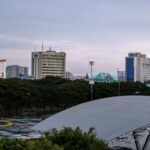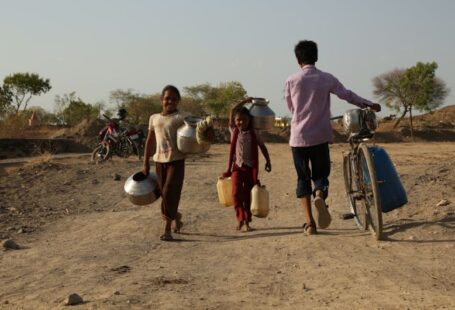Indonesia, with its vast archipelago comprising over 17,000 islands, is a country of stark contrasts. The bustling metropolises of Jakarta and Surabaya stand in juxtaposition with the serene villages scattered across the countryside. As the nation grapples with the challenges of modernization and sustainable development, one common solution is emerging to bridge the gap between urban and rural areas – solar energy.
The Rise of Solar Energy in Urban Indonesia
In recent years, urban areas in Indonesia have witnessed a surge in the adoption of solar energy as a clean and renewable power source. The ever-increasing electricity demand in cities has pushed both residential and commercial sectors to explore alternative energy solutions. Solar panels installed on rooftops of skyscrapers and shopping malls have become a common sight, harnessing the abundant sunlight that Indonesia receives throughout the year.
The appeal of solar energy in urban settings lies not only in its environmental benefits but also in its cost-effectiveness. With government incentives and the decreasing prices of solar panels, many urban dwellers are finding it economically viable to invest in solar power systems for their homes and businesses. This shift towards solar energy is not only reducing the carbon footprint of cities but also contributing to energy independence and resilience in the face of power outages.
Challenges and Opportunities in Rural Indonesia
While urban areas are swiftly embracing solar energy, the rural parts of Indonesia present a different set of challenges and opportunities. Many remote villages in the archipelago are still not connected to the national grid, relying on diesel generators for electricity, which are both expensive and environmentally harmful. Solar energy holds the promise of providing a sustainable and affordable energy source to these off-grid communities, empowering them with access to electricity for their daily needs.
However, the implementation of solar energy projects in rural Indonesia is not without obstacles. Limited infrastructure, lack of financing options, and the need for technical expertise pose significant barriers to the widespread adoption of solar power in remote areas. Despite these challenges, initiatives by the government, non-profit organizations, and private sector players are working towards overcoming these hurdles and bringing the benefits of solar energy to rural communities.
Empowering Communities through Solar Energy
One of the most compelling aspects of solar energy in Indonesia is its potential to empower communities, both in urban and rural settings. Beyond providing clean electricity, solar projects have the capacity to create jobs, stimulate local economies, and improve the quality of life for Indonesians across the country. In urban areas, solar energy is driving innovation in the green technology sector, spurring entrepreneurship and fostering a culture of sustainability.
In rural Indonesia, solar energy projects are not only lighting up homes and powering essential services like schools and health clinics but also opening up new opportunities for economic development. By harnessing the power of the sun, villages can reduce their reliance on fossil fuels, mitigate the impacts of climate change, and build a more resilient future for generations to come. The transformative potential of solar energy is not just about generating electricity; it is about creating a more equitable and sustainable society for all Indonesians.
Building a Brighter Future with Solar Energy
As Indonesia navigates the complex landscape of energy transition, solar power stands out as a promising solution that can bridge the gap between urban and rural areas. By harnessing the abundant sunlight that the country receives, Indonesia has the opportunity to reduce its carbon emissions, enhance energy security, and empower its communities with clean and affordable electricity. The momentum towards solar energy is growing, driven by a shared vision of a brighter and more sustainable future for all Indonesians.





